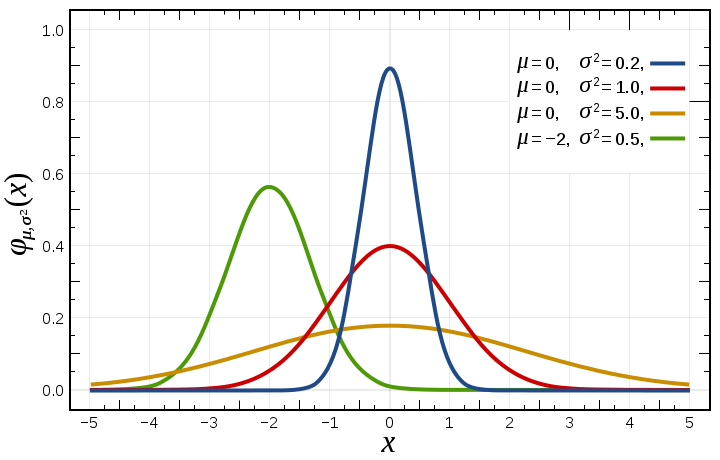In 8.6, the aiming mechanism's RNG was changed to produce a tighter shot distribution. The details of this have been gone over multiple times, particularly in WG's own announcement and this article on ftr-wot.blogspot.cz (blog now located at ftr.wot-news.com).
The gist of it simple pretty simple: Where once the outside of the aim circle represented 1.3 standard deviations from the aim point and any number >1.3 SDs generated by the RNG flew off to edge of the aim circle, this was being tweaked to be 3 standard deviations instead. Now that the patch is out, I'm fairly certain that the aim circle is still at 1.3-2 SDs in size as it appears smaller than it used to, but now the RNG will allow shots out to 3 SDs, which is the new definition of the gun's accuracy stat.
What does this mean practically? Well, take a look at a standard normal distribution:
The numbers along the bottom are distances in Standard Deviations and from the chart you can see that 68% of your shots will land within 1 SD of the aim point, 95% within 2 SDs and 99.7% within 3 SDs. For reasons unknown to players and statisticians the world around (programmers likely have a theory about system resources), Wargaming decided to set a hard limit on their random number generator at 1.3 SDs, which coincidently means that 1 in every 5 shots went straight to the edge of your aiming circle. By changing this value to 3 SDs, now only 3 in 1000 shots land directly on the edge of the aim circle. But that's not the only effect. The change "squeezes" the distribution, concentrating the shots towards the middle of the aim circle as can be seen by comparing the 8.5 (Red) and 8.6 (Blue) distributions in the image below:
 |
| Red represents, effectively, 8.5, and Blue represents 8.6. The wiki saves me the trouble of making an image again! |
 |
| Taifuuni's illustration of the change in shot distribution |
Guns in WoT have always been perfectly accurate. What they are not, however, is precise. Shots always average hitting the aim point. However, they do not always hit the target, rather they disperse over a rather large area. What this change will do is make all the guns in the game more precise as they will hit closer to center of the aim point.
Now, just how much more precise are we getting?
To measure precision, we probably want to compute something that tells us how far from the aim point we hit. I am going to use the average miss distance as our measure of precision, since direction doesn't change anything. That means (since we're only dealing with distances from the aim point) that our distribution is the half-normal distribution, the absolute value of a normal distribution.
The wiki says that gun accuracy is a 2 SD measure, but the FTR article suggests that shots will only deviate up to 1.3. I suspect that both may be right in that their way, so that while tanks have an accuracy given as the 2 SD measure, shots will never miss by that much.
Calculating it out, in 8.5, the average shot misses by 0.707 Standard Deviations, while those in 8.6 will miss, on average, by 0.79712 Standard Deviations. But I thought our guns were getting more precise?
They are, but not due to the change in the RNG. The precision is coming from the change in the definition of the Accuracy stat: Where once it was 2 SDs, it is now 3 SDs. So each Standard Deviation is 2/3rds the size of the old ones. Net Result is more precision. How much more?
 |
| Changes in the hit probability of the feared 183mm gun. Don't worry, it still hurts just as much. |
It could be considered equivalent to giving everyone a 33% buff to accuracy along with the bonus of dealing with fewer shots hitting the edges of the circle. Except they didn't buff everyone, now did they?
One of the things WG said they wanted to do was leave the accuracy of artillery mostly unaffected. To do this they nerfed most artillery's accuracy value by 50%, which happens to just leave artillery with the same Standard Deviations as before.
 |
| The 261's 180mm gun will still hit just as often, it'll just miss by more when it misses. |
Summary:
1. All non-artillery pieces will have improved hit probability and miss their aim-point by smaller distances
2. Non-Artillery will have a small (~5%) chance of missing further from the aim-point than it used to
3. Artillery has the EXACT SAME chance to hit a target as it used to
4. Artillery will, however, miss it's aim-point by a bit more than it used to, meaning a little less splash damage on average
Hopefully this helps you better understand the 8.6 changes.



















